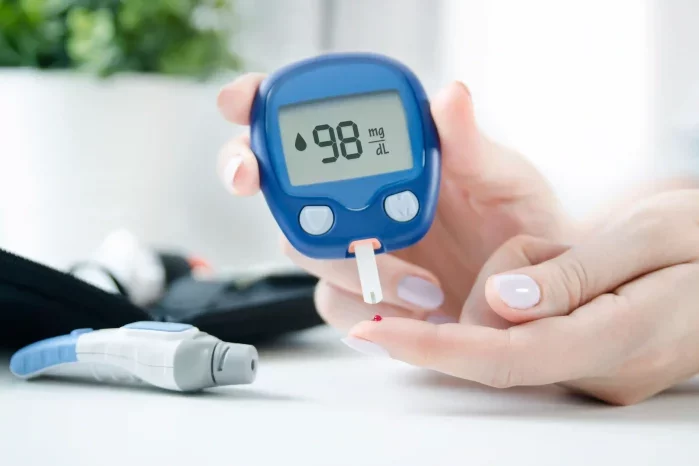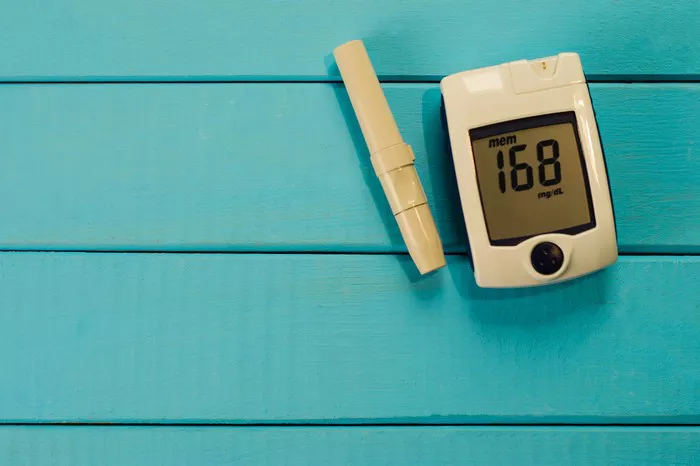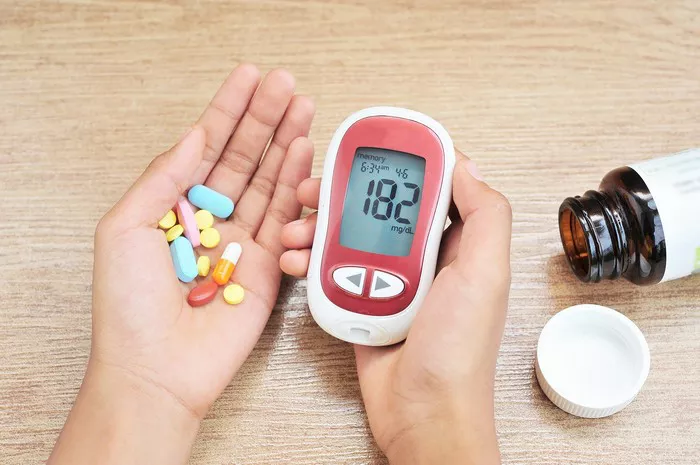Glucose monitoring and blood sugar monitoring are terms often used interchangeably in the context of diabetes management, but they represent distinct concepts and methodologies that are crucial for effective disease control. This article aims to clarify the differences, explore the technologies involved, and highlight the significance of accurate monitoring in the management of diabetes.
Introduction
Diabetes is a chronic disease that affects millions of people worldwide, requiring diligent management to prevent complications. Central to this management is the monitoring of glucose levels in the body. While the terms glucose monitoring and blood sugar monitoring are frequently used synonymously, they encompass different aspects and technologies that are vital for comprehensive diabetes care.
The Basics of Glucose and Blood Sugar
To understand the distinction, it’s important to define glucose and blood sugar. Glucose is a simple sugar that serves as a primary source of energy for the body’s cells. Blood sugar refers to the concentration of glucose present in the blood at any given time. Maintaining blood sugar levels within a healthy range is crucial for metabolic homeostasis.
Diabetes and the Need for Monitoring
Diabetes mellitus, commonly referred to as diabetes, is characterized by chronic hyperglycemia (high blood sugar levels) resulting from defects in insulin secretion, insulin action, or both. Effective management of diabetes involves keeping blood sugar levels within target ranges through lifestyle modifications, medication, and regular monitoring.
Blood Sugar Monitoring: Methods and Importance
Blood sugar monitoring is the process of regularly checking the glucose levels in the blood. This can be done using several methods, each with its own advantages and limitations.
Fingerstick Blood Sugar Testing
The most common method of blood sugar monitoring is the fingerstick test, which involves pricking the finger with a lancet to obtain a drop of blood. This blood sample is then placed on a test strip and inserted into a glucose meter, which measures the glucose concentration.
Advantages
- Immediate Results: Provides real-time data on blood sugar levels.
- Portability: Glucose meters are small and portable, making them convenient for frequent use.
- Cost-Effective: Generally less expensive than continuous glucose monitoring systems.
Limitations
- Pain and Discomfort: Frequent finger pricking can be painful and inconvenient.
- Limited Data Points: Only provides a snapshot of blood sugar levels at a specific moment, missing trends and patterns.
Continuous Glucose Monitoring (CGM)
Continuous glucose monitoring systems are advanced devices that measure glucose levels in interstitial fluid (fluid between the cells) at regular intervals throughout the day and night. A small sensor is inserted under the skin, which sends data to a monitor or smartphone app.
Advantages
- Continuous Data: Provides a comprehensive picture of glucose trends and patterns.
- Alerts: Can alert users to high or low blood sugar levels, helping to prevent emergencies.
- Improved Glycemic Control: Enables better management of blood sugar levels through detailed insights.
Limitations
- Cost: More expensive than traditional blood sugar testing methods.
- Sensor Life: Sensors need to be replaced regularly, adding to the cost and inconvenience.
- Calibration: Some CGMs require periodic calibration with fingerstick tests.
Flash Glucose Monitoring
Flash glucose monitoring, such as the FreeStyle Libre system, is a hybrid between traditional blood sugar testing and continuous glucose monitoring. It involves a sensor worn on the skin, which the user scans with a reader to obtain glucose readings.
Advantages
- Less Invasive: Reduces the need for frequent fingerstick tests.
- Convenient: Easy to use and provides quick access to glucose data.
- Affordable: Generally more affordable than full CGM systems.
Limitations
- Lag Time: There may be a slight delay between blood glucose levels and interstitial glucose readings.
- Limited Alerts: Unlike CGMs, flash monitors do not provide continuous alerts for high or low glucose levels.
Glucose Monitoring: Beyond Blood Sugar
While blood sugar monitoring focuses on measuring glucose levels in the blood, glucose monitoring encompasses a broader range of methods and contexts, including continuous and non-invasive technologies.
Non-Invasive Glucose Monitoring
Researchers are exploring non-invasive glucose monitoring methods that do not require blood samples. These technologies aim to measure glucose levels using techniques such as optical sensors, electromagnetic waves, and other innovative approaches.
Advantages
- No Blood Draw: Eliminates the need for fingersticks and blood samples.
- Comfort: More comfortable and user-friendly for continuous use.
- Potential for Real-Time Monitoring: Offers the possibility of continuous glucose data without invasive procedures.
Challenges
- Accuracy: Ensuring accurate readings comparable to traditional methods is a significant challenge.
- Technical Complexity: Developing reliable and cost-effective non-invasive devices is technically demanding.
- Regulatory Approval: Gaining regulatory approval for new technologies can be a lengthy process.
Integration with Health Technology
Modern glucose monitoring devices are increasingly integrated with health technology platforms, including smartphone apps and cloud-based systems. These integrations enable advanced features such as data sharing with healthcare providers, trend analysis, and personalized recommendations.
Benefits
- Enhanced Data Management: Simplifies the tracking and analysis of glucose data.
- Improved Communication: Facilitates better communication between patients and healthcare providers.
- Personalized Care: Enables tailored recommendations and interventions based on individual glucose patterns.
Considerations
- Data Security: Ensuring the privacy and security of sensitive health data is paramount.
- Usability: Designing user-friendly interfaces that cater to a diverse population is crucial.
- Interoperability: Ensuring compatibility with various devices and health platforms enhances usability and effectiveness.
The Role of Monitoring in Diabetes Management
Effective glucose monitoring is a cornerstone of diabetes management, providing critical data that informs treatment decisions, lifestyle modifications, and overall disease management.
Glycemic Control
Maintaining optimal glycemic control is essential to prevent the acute and chronic complications of diabetes. Monitoring provides the necessary data to adjust insulin doses, medications, and dietary choices to keep blood sugar levels within target ranges.
Prevention of Hypoglycemia and Hyperglycemia
Hypoglycemia (low blood sugar) and hyperglycemia (high blood sugar) are common challenges in diabetes management. Regular monitoring helps detect these conditions early, allowing for prompt corrective actions to prevent severe outcomes.
Long-Term Health Outcomes
Consistent and accurate glucose monitoring contributes to better long-term health outcomes by reducing the risk of diabetes-related complications such as cardiovascular disease, neuropathy, nephropathy, and retinopathy.
Empowering Patients
Monitoring empowers patients by providing them with real-time feedback on how their lifestyle and treatment choices affect their glucose levels. This knowledge fosters a proactive approach to managing diabetes and encourages adherence to treatment plans.
Future Trends in Glucose Monitoring
The field of glucose monitoring is rapidly evolving, driven by advancements in technology and a growing understanding of diabetes management. Several trends and innovations are shaping the future of glucose monitoring.
Artificial Intelligence and Machine Learning
Artificial intelligence (AI) and machine learning (ML) are being integrated into glucose monitoring systems to enhance predictive analytics and personalized care. These technologies can analyze vast amounts of data to identify patterns, predict glucose fluctuations, and recommend tailored interventions.
Benefits
- Predictive Insights: AI can provide early warnings for potential glucose excursions, allowing for preemptive actions.
- Personalized Recommendations: ML algorithms can offer customized advice based on individual glucose patterns and lifestyle factors.
- Enhanced Decision Support: AI-driven systems can support healthcare providers in making informed treatment decisions.
Challenges
- Data Quality: High-quality data is essential for accurate AI predictions and recommendations.
- User Trust: Ensuring user trust in AI-driven recommendations requires transparency and validation.
- Regulatory Considerations: Regulatory frameworks must adapt to address the complexities of AI in healthcare.
Wearable and Implantable Devices
Wearable and implantable glucose monitoring devices are becoming more sophisticated, offering greater convenience and accuracy. These devices are designed to be discreet, comfortable, and provide continuous data without the need for frequent calibration.
Advantages
- Convenience: Reduces the burden of frequent testing and device maintenance.
- Discreet Monitoring: Enables continuous monitoring without drawing attention.
- Improved Accuracy: Advances in sensor technology are enhancing the accuracy of wearable and implantable devices.
Considerations
- Cost: The affordability of advanced devices remains a concern for many patients.
- Longevity: Extending the lifespan of sensors and implants is a key area of research.
- User Adoption: Ensuring ease of use and acceptance among patients is crucial for widespread adoption.
Integration with Broader Health Ecosystems
Glucose monitoring devices are increasingly being integrated into broader health ecosystems, including electronic health records (EHRs), telemedicine platforms, and health management apps. This integration facilitates comprehensive care and supports coordinated disease management.
Benefits
- Holistic Health Management: Combines glucose data with other health metrics for a comprehensive view of patient health.
- Remote Monitoring: Supports telehealth initiatives, enabling remote monitoring and consultations.
- Enhanced Patient Engagement: Engages patients in their own care through accessible and interactive platforms.
Challenges
- Interoperability: Ensuring seamless integration with various health systems and devices is complex.
- Data Privacy: Protecting patient data in an interconnected health ecosystem is critical.
- User Education: Educating patients and providers on the use and benefits of integrated systems is necessary.
Conclusion
Glucose monitoring and blood sugar monitoring, while closely related, represent distinct concepts and methodologies that are integral to effective diabetes management. Traditional blood sugar testing methods, such as fingerstick tests, provide immediate and cost-effective results but are limited by their invasive nature and lack of continuous data. Continuous glucose monitoring systems offer comprehensive insights and improved glycemic control but come with higher costs and technical requirements.
Emerging technologies, including non-invasive monitoring, AI-driven analytics, and advanced wearable devices, are poised to revolutionize glucose monitoring by enhancing accuracy, convenience, and personalized care.
Related topics:
How To Check Sugar Level At Home Without Meter



























